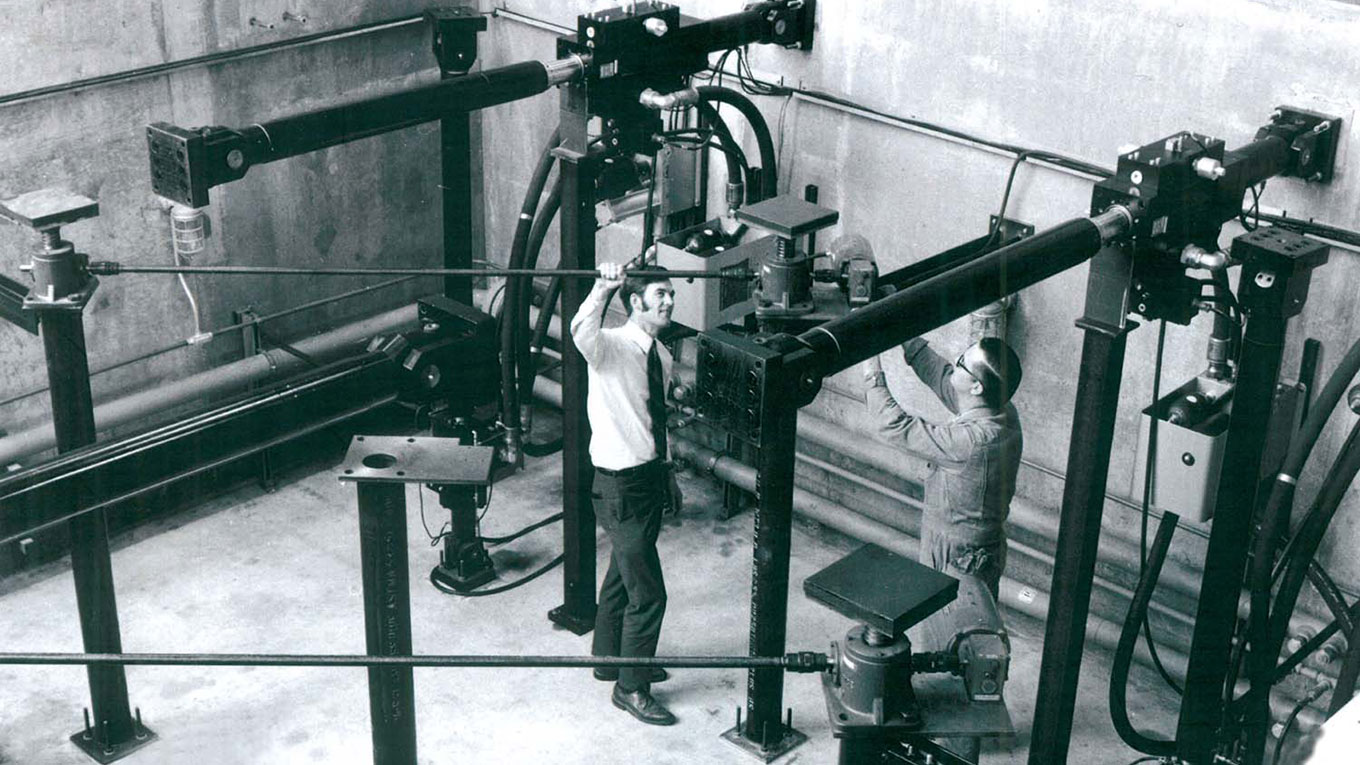 Shaking table at UC Berkeley's Richmond Field Station in the early 1970s. (Photo courtesy Berkeley Engineering)
Shaking table at UC Berkeley's Richmond Field Station in the early 1970s. (Photo courtesy Berkeley Engineering)UC Berkeley-PEER shaking table turns 50
On June 24, the Pacific Earthquake Engineering Research Center (PEER) will celebrate the 50th anniversary of its shaking table. The 20’x20’ reinforced concrete table, located at the Richmond Field Station, has been helping UC Berkeley engineers advance seismic research since it was unveiled in 1972 as the world’s first modern shaking table.
The shaking table remains the largest six-degrees-of-freedom table in the country, capable of moving in three translational degrees and three rotational degrees to simulate earthquake-like movement. It also can be programmed to reproduce any wave form within the capacities of the system and has tested specimens weighing up to 150,000 pounds.
The table has been pivotal in proof-of-concept tests for isolators, energy dissipation devices and building systems, as well as anchoring and bracing systems — leading to improved construction standards and technologies. As a result, airports, hospitals, essential bridges and government buildings have been retrofitted or newly designed with response modification devices that will significantly reduce structural and non-structural damage and allow operations to resume quickly after an earthquake.
A model for shaking tables around the world, Berkeley’s table was originally designed by civil engineering professor Joseph Penzien, with the assistance of fellow faculty member Ray Clough; researcher Dixon Rea also played a significant role in the table’s early development and operation.
Learn more:
- Pacific Earthquake Engineering Research Center
- Simulating Earthquakes with a Shaking Table (article and video by KQED)













